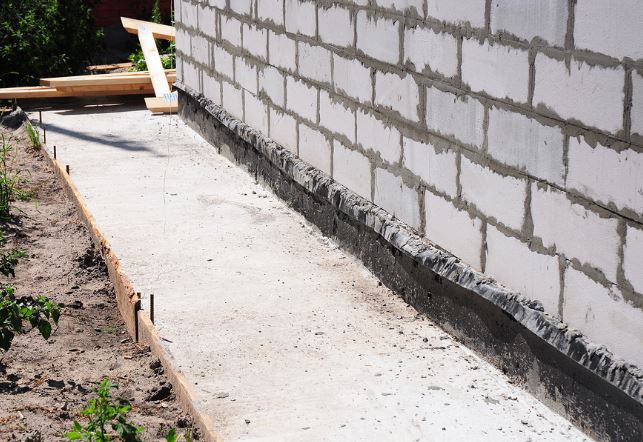How Foundation Piers Work to Stabilize Basement Walls

Have you ever heard of foundation piers? Many homeowners are probably not familiar with this term and only hear about it the moment they start to experience some foundation problems.
Foundation Piering Defined
Piering refers to the process of driving sections of concrete or steel pipe pilings under a foundation to stabilize it and avoid future moment. A hydraulic pump is used to push the piers into the ground. Foundation piers that are concentrically loaded are installed right below the middle of the wall that will be lifted and the foundation is used as resistance for pushing the pier into the ground.
The piers should be driven deep enough so that they will hit bedrock or any stable strata for them to be effective. It serves as a solid and strong base required for supporting the piers that will then support the foundation. Foundation piering is considered as the strongest and most reliable method to stabilize a sinking or settling foundation.
Push Piers
Foundation push piers provide maximum foundation support that makes them most suitable for heavier loads and larger jobs. These have been designed for driving deep down to the earth to solid supporting strata or bedrock under the foundation. Since these are installed with the least skin friction, they provide the deepest penetration of any form of foundation support with no bending in the strata. Push piers are also useful for low impact interior installations.
Push piers also allow a sinking foundation to be raised to a flatter and more level condition. Through careful application, these can shrink and close existing cracks in drywall, stucco, brick, and other exterior finishes, while other issues such as jamming, sticking doors, leaning chimneys, and windows may be improved with push pier application as well. However, push piers will not guarantee perfectly flat or level conditions or a moisture-tight or water condition. These are also not effective as repair for fatigue or bowing foundation walls.
Helical Piers
Foundation helical piers provide an effective means of adding structural support to lighter and smaller structures such as patios, rooms, porches, steps, and other similar installations. But, once used for supporting a house’s heavy weight, they might not be that effective.
Helical piers have been designed with steel shaft including a corkscrew design at their end. A part of the foundation should be excavated to install these. The shaft is then drilled under the house, with the installation attached to the structure using a steel bracket. It is easier to install helical piers on weaker or older structures. These can also be used for new construction or pre-construction bearing systems in poor soils.
Foundation helical piers can provide an opportunity to try to lift the structure to return it into a flatter and more level position. But, helical piers don’t ensure perfectly level or flat conditions and these cannot lower moisture level of basements or improve water tightness.
If you notice some problems with the stability of your basement walls, foundation piering may be the best solution you can consider. Contact foundation repair in Cleveland for assistance.
